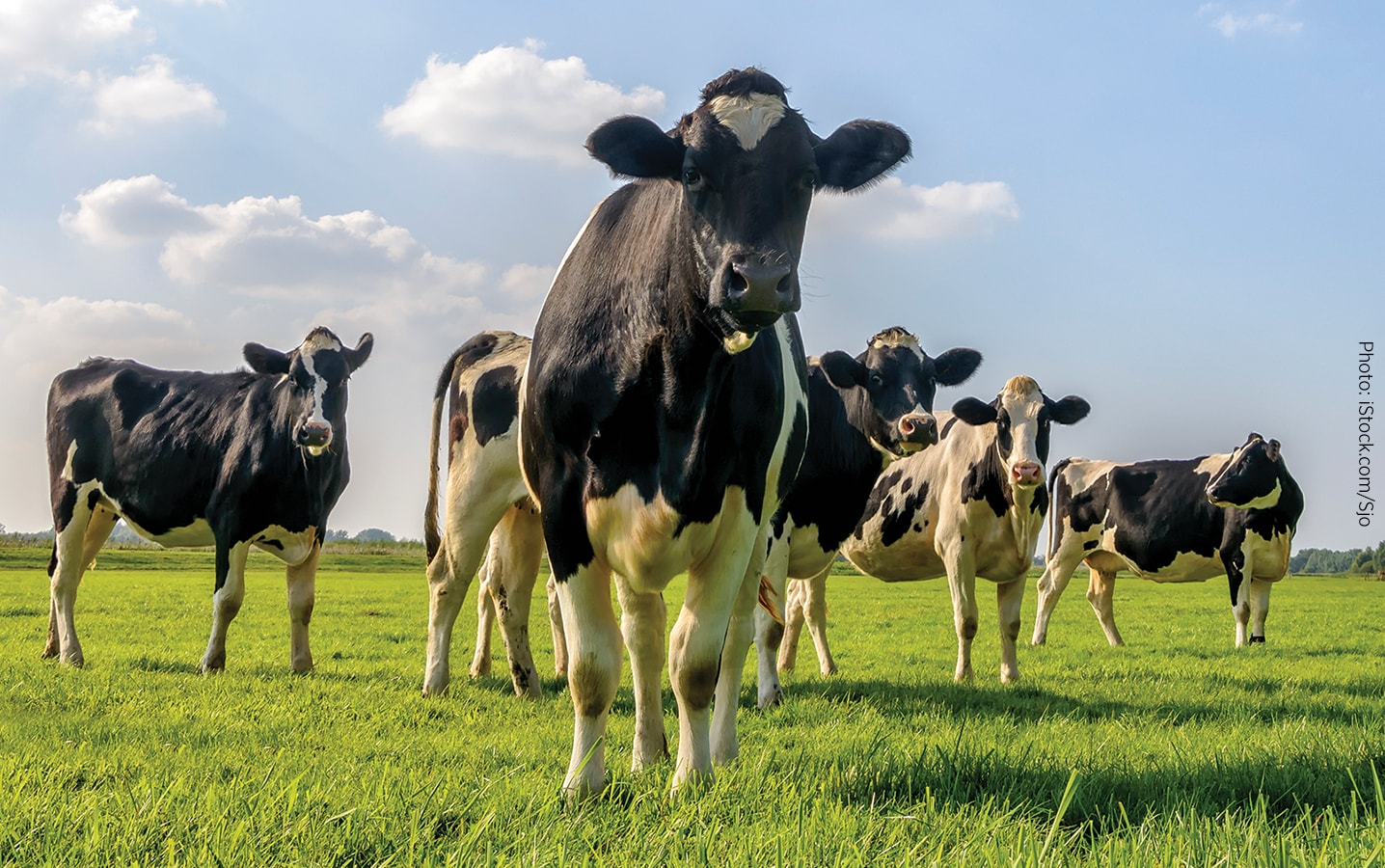Canola meal reduces methane output from dairy cows
This article has been co-authored by Brittany Dyck and Essi Evans.
New research by Agriculture and Agri-Food Canada research scientist Chaouki Benchaar shows that canola meal, in addition to supplying escape protein and essential amino acids, can be instrumental in reducing enteric methane and nitrous oxide in dairy cows.
The accumulation of greenhouse gases, primarily carbon dioxide, methane and nitrous oxide, are blamed for causing atmospheric changes, including global warming. The warming potential of methane is approximately 20 times greater than carbon dioxide, and nitrous oxide is about 300 times greater than carbon dioxide. The current convention for measurement is to convert greenhouse gas emissions to a carbon dioxide equivalent. Therefore, the removal of one pound of methane is equal to eliminating 20 pounds of carbon dioxide, and likewise one pound of nitrous oxide is as good as removing 300 pounds of carbon dioxide from the atmosphere.
Exact figures for emission by livestock vary with source. However, values obtained from the Food and Agriculture Organization (FAO) suggest that 14.5 per cent of the greenhouse gases produced by human activity arise from livestock production. Rumen fermentation accounts for about 75 per cent of the livestock total. Thus, reducing greenhouse gas production by dairy and beef cattle can be a practical way of reducing a portion of these emissions, particularly if it can be accomplished at a low cost to dairy and beef producers.
One way of reducing costs to producers is to capture the energy from methane that would otherwise be lost to the atmosphere and allow that energy to be used by the cow. Some of Benchaar’s previous research showed that fat supplementation, particularly fats rich in unsaturated fatty acids, are useful for the reduction of rumen methane. Indeed, the fatty acid profile of canola meal has been shown to be particularly beneficial to reducing methane output.
Benchaar presented two posters of his most recent research at the virtual American Dairy Science Association annual meeting.
| Canola meal (% of total dry matter) | ||||
|---|---|---|---|---|
| 0 | 4 | 8 | 12 | |
| Dry matter intake (lb.) | 58.7 | 61.2 | 61.6 | 62.9 |
| Energy corrected milk (lb.) | 92.6 | 95.0 | 95.9 | 98.6 |
| Total methane output (g/day) | 489 | 475 | 463 | 461 |
| Methane (g) per pound of energy corrected milk | 5.3 | 5.0 | 4.8 | 4.7 |
| Energy lost as methane (% of total) | 5.65 | 5.28 | 5.05 | 4.90 |
The first presentation “Replacing Soybean Meal with Canola Meal Reduced Enteric Methane Production and Improved Milk production in Dairy Cows” showed that the percentage of the total dietary energy lost as methane was reduced with canola meal, and methane emission per kilogram of energy corrected milk declined as the feeding rate of canola meal was increased.
The diets used in the study provided zero, four, eight and 12 per cent canola meal. The diets contained 52 per cent forage and 48 per cent concentrate, and all diets provided 16 per cent crude protein. (Results are provided in Table 1.) Dry matter intake and milk yield increased with each incremental increase in canola meal in the diet. Methane production decreased both overall and when expressed per unit of milk. The energy lost as methane was also reduced by the substitution of canola for soybean meal. This energy then became available for the cows to put to productive purposes.
The second of Benchaar’s presentations “Canola Meal in Dairy Diets: Effects on Nitrogen Utilization” shows that canola meal results in less urinary nitrogen output when compared to soybean meal. Urine nitrogen is volatile and is known to contribute to atmospheric ammonia and nitrous oxide.
Many feed additive products are available to help reduce greenhouse gas emissions. This research shows that the inclusion of canola meal in the diet may also be an effective and economical tool for reducing these waste products as well as improving milk production.
This research is part of the Canola AgriScience Cluster, with funding provided through Agriculture and Agri-Food Canada’s Canadian Agricultural Partnership, the Canola Council of Canada, Alberta Canola, SaskCanola and the Manitoba Canola Growers. For more information, please visit CanolAmazing.com.





